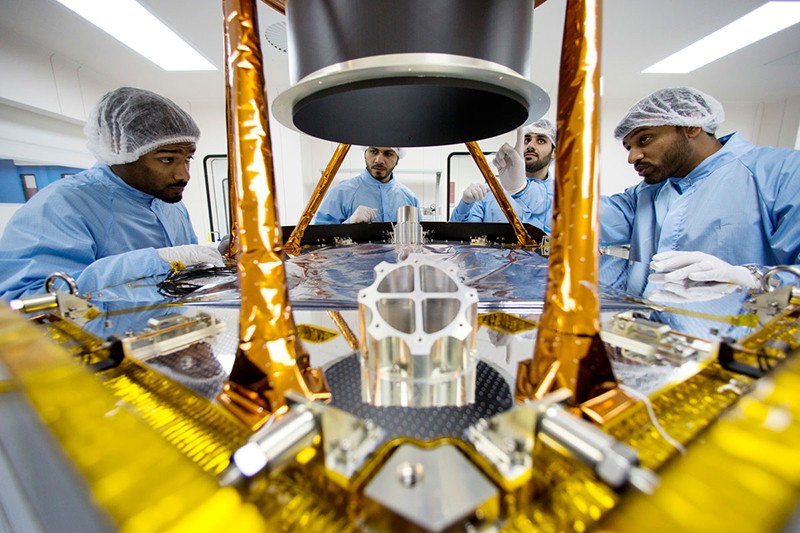
The Hope robotic probe in Colorado. The ruler of Dubai wanted to offer inspiration for youth in the wider Arab world. “That’s why he called the spacecraft Hope,” said Omran Sharaf, the mission’s project manager.
In December, a spacecraft named Hope was motionless in the middle of a large clean room on the campus of the University of Colorado, mounted securely on a stand.
But engineers were tricking Hope — a foil-wrapped box about the size and weight of a Mini Cooper — into thinking it was speeding at more than 10,000 miles per hour as it pulled into orbit at Mars. It was a simulation to make sure that the guidance, navigation and control systems would respond correctly to a variety of less-than-perfect circumstances when it arrives at Mars for real next year.
While this spacecraft was assembled on American soil, it will not be exploring the red planet for NASA. Hope is instead an effort by the United Arab Emirates, an oil-rich country smaller than the state of Maine and one that has never sent anything out into the solar system.




